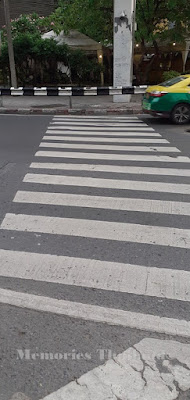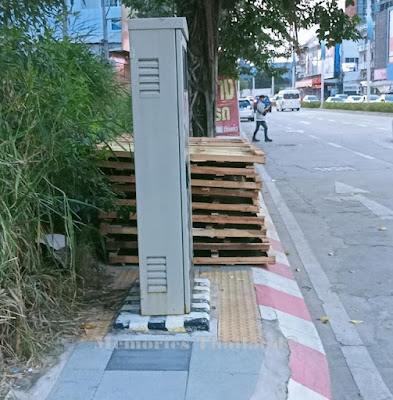Navigating the maze, unraveling street problems and road mistakes.
Thailand is notorious for its chaotic streets and road mishaps. Despite efforts to enhance infrastructure, various issues persist, creating hurdles for pedestrians and motorists alike. From improperly constructed pedestrian crossings to perplexing road layouts, Pattaya's streets present a myriad of challenges, raising questions about the city's commitment to safety and urban planning.
Improperly constructed pedestrian crossings in Thailand.
Navigating the streets of Pattaya can be a daunting task for pedestrians, especially at poorly designed pedestrian crossings. In Thailand, where traffic regulations are often loosely enforced, pedestrian safety is frequently compromised.
Many pedestrian crossings lack proper signage, adequate lighting, and designated waiting areas, exposing pedestrians to unnecessary risks. In Pattaya, this issue is exacerbated by the city's bustling tourism industry, with visitors often unfamiliar with local traffic norms.
Genius Pattaya and the road mistakes.
The ambitious "Genius Pattaya" initiative aimed to transform the city into a smart and sustainable urban center. However, amidst the grand plans, fundamental road mistakes persist. Confusing intersections, erratic traffic flow, and inadequate signage contribute to frequent gridlocks and accidents. While the initiative heralded technological advancements, its efficacy in addressing basic infrastructural challenges remains questionable.
Pedestrians and their problems walking on pedestrian paths.
Pedestrian paths are meant to provide safe passage for foot traffic, yet they often fall short of this objective. Sidewalks are cluttered with obstructions, from street vendors to parked motorcycles, forcing pedestrians onto the roadways.
Moreover, uneven pavement and potholes pose hazards to pedestrians, particularly the elderly and disabled. The lack of enforcement further exacerbates these issues, perpetuating a cycle of neglect.
Learned nothing, footpath for what?
Despite recurring accidents and public outcry, Pattaya's authorities seem indifferent to the plight of pedestrians. Footpaths, intended as safe zones for walkers, are frequently encroached upon by vehicles or converted into makeshift parking spaces. This blatant disregard for pedestrian rights reflects a broader failure in urban planning and governance. Without meaningful interventions, Pattaya risks alienating both residents and tourists, undermining its reputation as a desirable destination.
Does Pattaya city hall care about all mistakes?
The question looms large: does Pattaya City Hall genuinely care about rectifying its street problems and road mistakes? While sporadic efforts are made to address immediate concerns, systemic issues persist.
The lack of accountability and transparency in urban governance hampers progress, leaving residents and visitors vulnerable to the hazards of poorly managed streets. Pattaya's potential as a world class city hinges on its ability to prioritize safety and sustainability over short term gains.
Pattaya's street problems and road mistakes paint a sobering picture of urban development in Thailand. From improperly constructed pedestrian crossings to the neglect of pedestrian paths, the city grapples with multifaceted challenges that demand urgent attention.
While initiatives like genius Pattaya offer glimpses of hope, meaningful change requires a concerted effort from policymakers, urban planners, and the community at large. Only through collective action can Pattaya reclaim its streets as safe and inclusive spaces for all.










